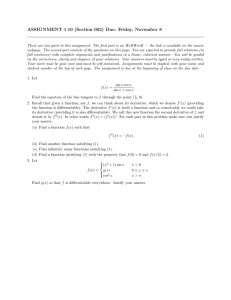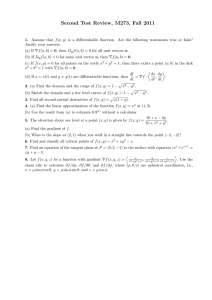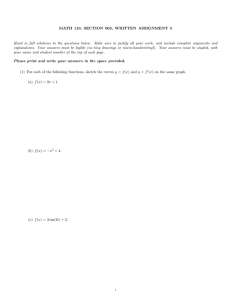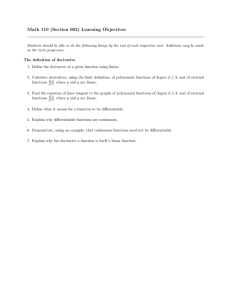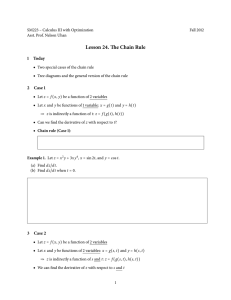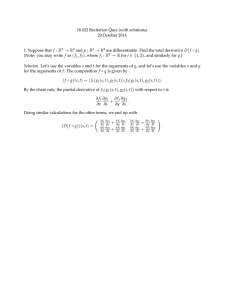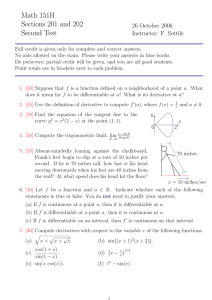MATH 110, SECTION 003, WRITTEN ASSIGNMENT 3
advertisement
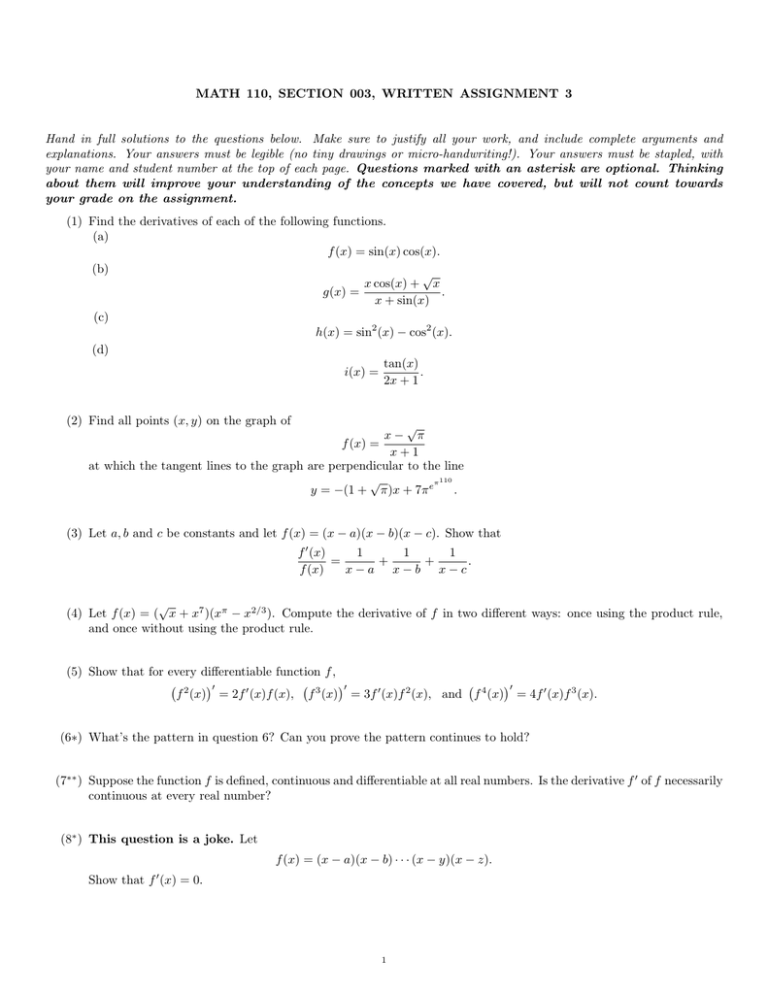
MATH 110, SECTION 003, WRITTEN ASSIGNMENT 3 Hand in full solutions to the questions below. Make sure to justify all your work, and include complete arguments and explanations. Your answers must be legible (no tiny drawings or micro-handwriting!). Your answers must be stapled, with your name and student number at the top of each page. Questions marked with an asterisk are optional. Thinking about them will improve your understanding of the concepts we have covered, but will not count towards your grade on the assignment. (1) Find the derivatives of each of the following functions. (a) f (x) = sin(x) cos(x). (b) √ x cos(x) + x . g(x) = x + sin(x) (c) h(x) = sin2 (x) − cos2 (x). (d) tan(x) . i(x) = 2x + 1 (2) Find all points (x, y) on the graph of √ x− π f (x) = x+1 at which the tangent lines to the graph are perpendicular to the line √ π 110 y = −(1 + π)x + 7π e . (3) Let a, b and c be constants and let f (x) = (x − a)(x − b)(x − c). Show that 1 1 1 f 0 (x) = + + . f (x) x−a x−b x−c √ (4) Let f (x) = ( x + x7 )(xπ − x2/3 ). Compute the derivative of f in two different ways: once using the product rule, and once without using the product rule. (5) Show that for every differentiable function f , 0 0 0 f 2 (x) = 2f 0 (x)f (x), f 3 (x) = 3f 0 (x)f 2 (x), and f 4 (x) = 4f 0 (x)f 3 (x). (6∗) What’s the pattern in question 6? Can you prove the pattern continues to hold? (7∗∗ ) Suppose the function f is defined, continuous and differentiable at all real numbers. Is the derivative f 0 of f necessarily continuous at every real number? (8∗ ) This question is a joke. Let f (x) = (x − a)(x − b) · · · (x − y)(x − z). 0 Show that f (x) = 0. 1
